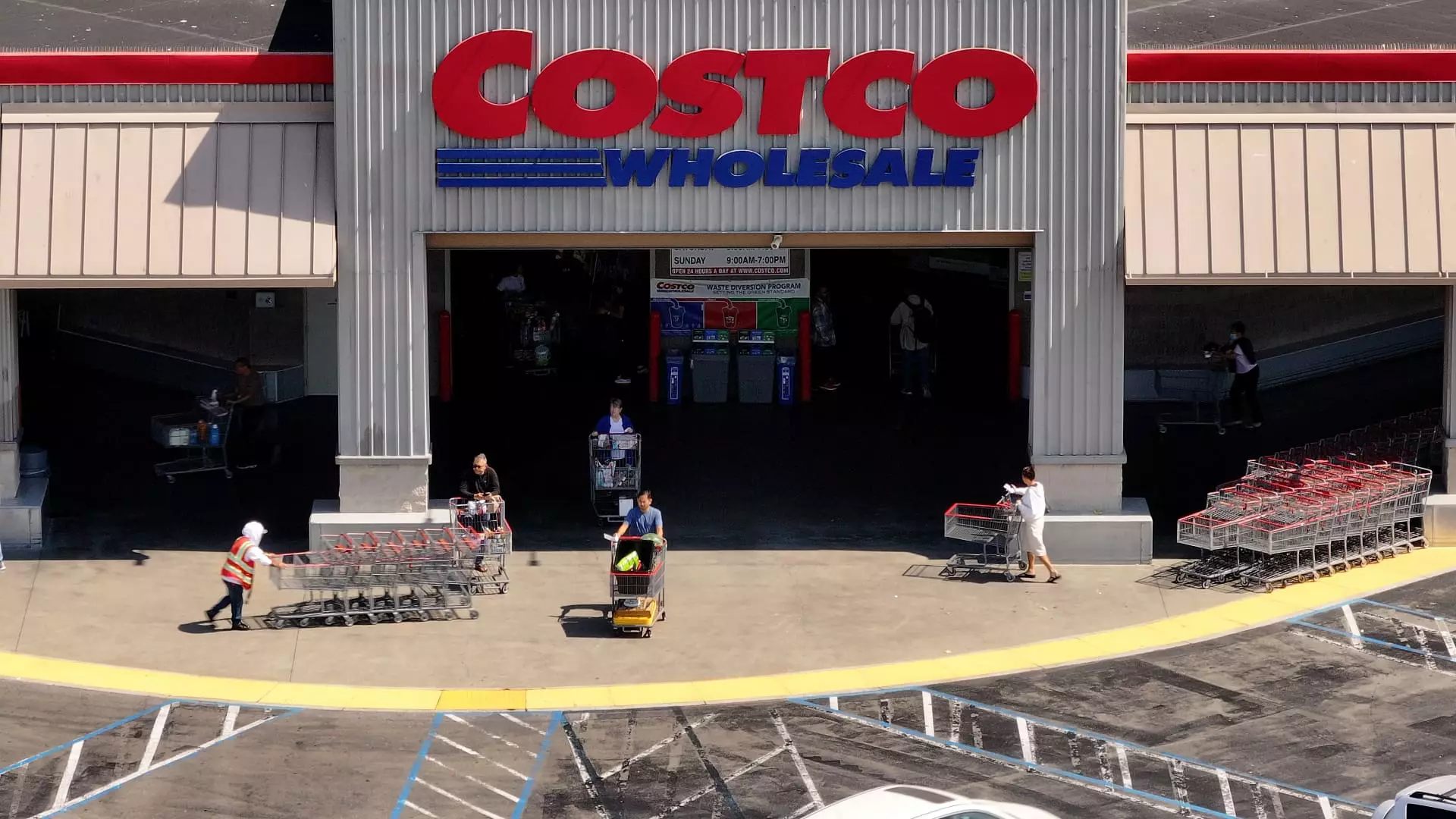In today’s unpredictable financial landscape, corporations are either soaring or crashing spectacularly—a concerning reflection of both market sentiment and economic forecasts. Costco has emerged as a formidable player, witnessing a 3% surge in their stock after their fiscal third-quarter results shattered analyst expectations. With an 8% increase in sales year-over-year, Costco demonstrates a robust business model that rides on consumer confidence and effective inventory management. However, this is not indicative of every retailer’s fortunes. In stark contrast, Gap faced a 20% dive in stock price despite posting first-quarter earnings that exceeded projections. This decline stems from a grim outlook for the current quarter, suggesting stagnation in sales—a clear message that even positive momentum can be quickly overshadowed by negative sentiment.
Beauty Soars, Apparel Falters
Ulta Beauty serves as a shining counterexample to Gap’s misfortunes. Their impressive nearly 13% rise in stock value is attributed to innovative product launches and a decrease in inventory losses, propelling their projected annual profits to new heights. This divergence in performance raises critical questions about consumer preferences and the adaptability of brands. Is the beauty industry more resilient in these tumultuous times, or is Gap simply failing to resonate with contemporary shoppers? As consumers increasingly prioritize experience over material goods, Gap’s struggles reflect a more extensive issue of brand relevance that could have dire implications for traditional retail sectors.
Tech Trials and Tribulations
In the realm of technology, Elastic NV’s stock fell 12% following a revenue forecast that failed to meet analysts’ expectations. The tech industry, which often basks in the glow of rapid growth, seems to be encountering its own set of challenges. Similarly, Marvell Technology’s 6% drop after disappointing earnings reports highlights the pitfalls of high expectations in a crowded marketplace. Investors are increasingly wary of companies that promise but fail to deliver. It’s crucial that these firms recalibrate their strategies in a landscape where the urgency for innovation clashes with market realities.
Pharmaceutical Failures
The biopharmaceutical sector hasn’t been spared from volatility either. Shares of Regeneron Pharmaceuticals plummeted by 18% while Sanofi dropped 5.6% following inconsistent results in late-stage trials for their respiratory drug itepekimab. The stakes are high in the life sciences, and failures in drug trials ripple through stock performance, revealing the tenuous nature of investor confidence in potentially groundbreaking treatments. It serves as a reminder that the promise of new therapies must be substantiated by reliable data—a lesson painfully learned in the high-stakes world of pharmaceuticals.
Clarity in a Cloudy Future
PagerDuty’s forecast of disappointing quarterly profits, leading to an 11% stock decline, embodies a troubling paradox in tech’s trajectory. In an industry that is meant to inspire innovation, such forecasts reflect a growing disconnect between expectations and reality. Meanwhile, Zscaler reported a robust third-quarter performance, resulting in an 8% gain for the cloud security firm, indicating that not all is bleak within the tech domain. These contrasting outcomes underline the necessity for companies to refine their projections or risk alienating investors amid a landscape fraught with unpredictability.
The current state of the market is a sobering reminder of the volatility inherent in today’s economy. Negative sentiment can inhibit growth for even the strongest brands, while innovative strategies can arouse investor interest in the most unexpected sectors. As we analyze these fluctuating stocks, it’s clear that adaptability and brand relevance will be critical determinants of future success.

